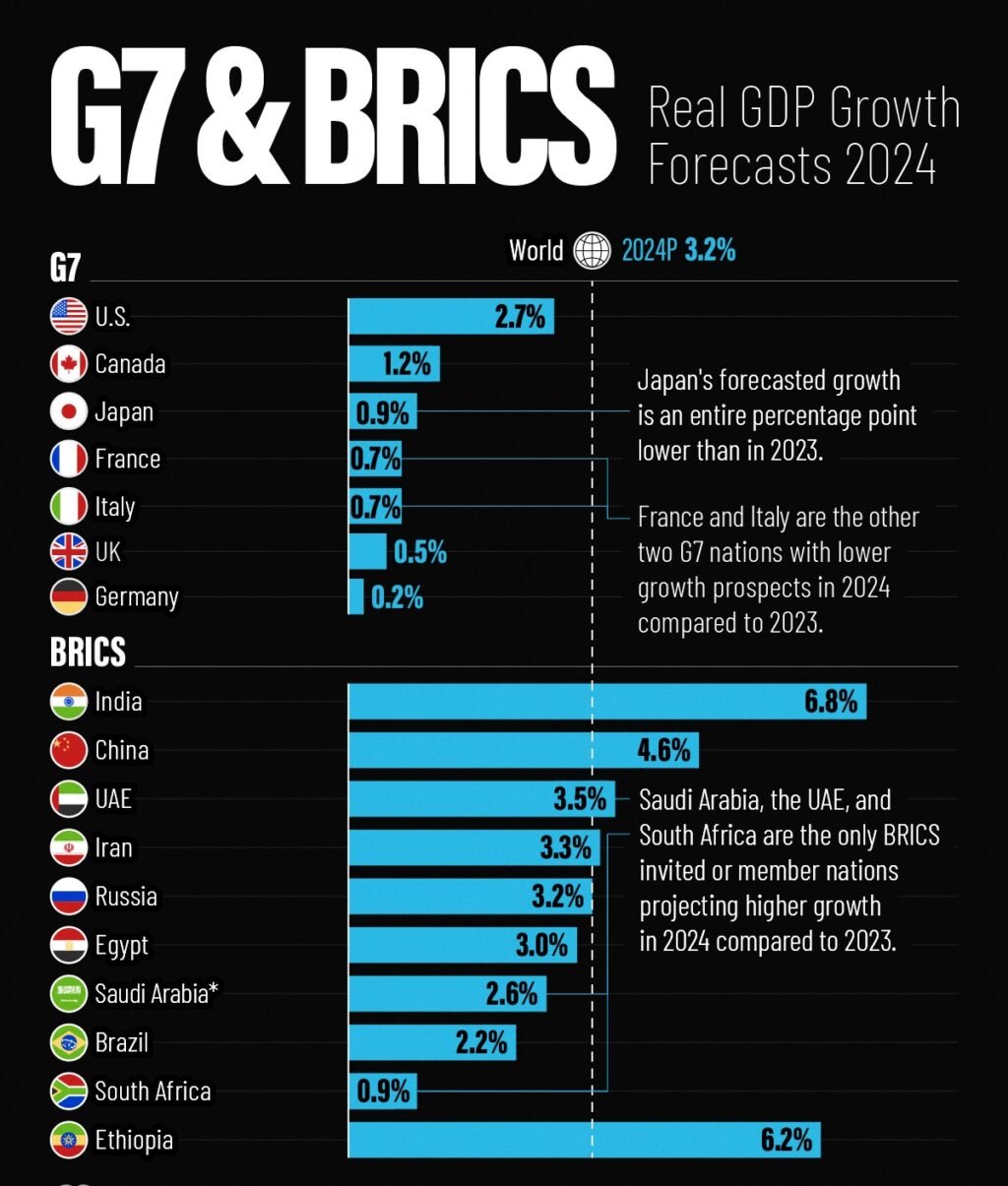Contents
G7 vs BRICS: The race for economic dominance continues between the established G7 and the emerging BRICS economies. While the International Monetary Fund (IMF) predicts global growth to hold steady at 3.2% in 2024, a closer look reveals a tale of mixed prospects for these two major blocs.
Highlights:
- Growth Slowdown: Most G7 and BRICS countries are seeing slower growth in 2024 compared to 2023.
- G7 vs BRICS: Despite the slowdown, BRICS has a higher average growth forecast (3.6%) than the G7 (1%) in 2024. This could lead BRICS to surpass the G7 in economic size within two decades.
- BRICS Expansion on Hold: Argentina declined and Saudi Arabia hesitates to join BRICS, but 34 other countries are interested.
- Future of BRICS: Decisions made at the upcoming BRICS summit in October 2024 could significantly impact the bloc’s future and the global economic balance.
G7 vs BRICS: Growth Slowdown for Most
The IMF’s 2024 World Economic Outlook paints a picture of a slowdown for most G7 and BRICS countries compared to 2023. Only a handful of members within both blocs are projected to experience faster growth this year.
- BRICS: Among the BRICS nations (Brazil, Russia, India, China, South Africa), just three – Saudi Arabia (considering an invitation), UAE, and South Africa – boast higher projected real GDP growth rates in 2024 than in 2023. China and India, while maintaining relatively high growth forecasts of 4.6% and 6.8% respectively, are still experiencing a slowdown compared to the previous year.
- G7: The story isn’t much brighter for the G7 (Canada, France, Germany, Italy, Japan, UK, US). Only four nations – including Germany, bouncing back from a negative growth rate in 2023 – are expected to see an uptick in growth compared to last year.

BRICS Edges Out G7 in Growth Rate, for Now
Despite the slowdown, BRICS countries, on average, hold a significant advantage in growth rate projections for 2024. The IMF forecasts an average growth of 3.6% for BRICS nations, compared to just 1% for the G7.
This advantage, coupled with the potential for new members, suggests a possible shift in the global economic landscape. While the G7 currently boasts a much larger combined GDP (around $15 trillion more than BRICS), BRICS’ higher growth trajectory could see them overtake the G7 in economic size within the next two decades.
BRICS Expansion: On Hold or On the Horizon?
BRICS’ recent plans for expansion have hit a snag. Argentina’s newly elected president declined the invitation to join, and Saudi Arabia remains on the fence. However, this doesn’t appear to dampen the bloc’s long-term ambitions. South Africa’s Foreign Minister reports receiving applications from 34 countries interested in joining BRICS.
Whether these applications translate into actual membership will likely be announced at the upcoming BRICS summit scheduled for October 22-24, 2024, in Kazan, Russia.
G7 vs BRICS – A Dynamic Rivalry
The economic rivalry between the G7 and BRICS continues to evolve. While the G7 currently holds the upper hand in terms of total GDP, BRICS’ higher growth rates and potential expansion signal a possible future shift. The upcoming BRICS summit and the decisions made there could significantly impact the future balance of power between these two influential economic blocs.
Read more: BRICS Expansion: New Members Could End US Dollar Dominance, Boost AI










